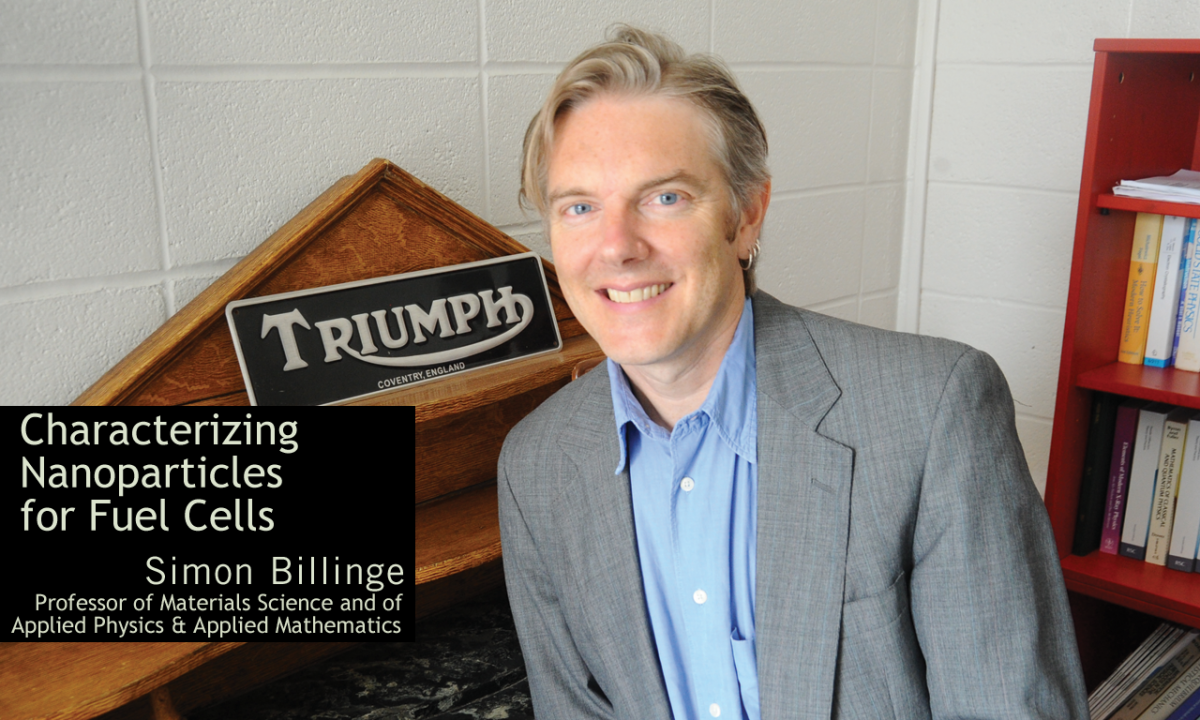Materials Science and Engineering Program
Program in the Department of Applied Physics and Applied Mathematics, sharing teaching and research with the faculty of the Henry Krumb School of Mines.
200 S. W. Mudd, MC 4701
Phone: 212-854-4457
apam.columbia.edu
seas.columbia.edu/matsci
Materials Science and Engineering (MSE) focuses on understanding, designing, and producing technology-enabling materials by analyzing the relationships among the synthesis and processing of materials, their properties, and their detailed structure. This includes a wide range of materials such as metals, polymers, ceramics, and semiconductors. Solid-state science and engineering focuses on understanding and modifying the properties of solids from the viewpoint of the fundamental physics of the atomic and electronic structure.
 The undergraduate and graduate programs in materials science and engineering are coordinated through the MSE Program in the Department of Applied Physics and Applied Mathematics. This program promotes the interdepartmental nature of the discipline and involves the Departments of Applied Physics and Applied Mathematics, Chemical Engineering and Applied Chemistry, Electrical Engineering, and Earth and Environmental Engineering in the Henry Krumb School of Mines (HKSM) with advisory input from the Departments of Chemistry and Physics.
The undergraduate and graduate programs in materials science and engineering are coordinated through the MSE Program in the Department of Applied Physics and Applied Mathematics. This program promotes the interdepartmental nature of the discipline and involves the Departments of Applied Physics and Applied Mathematics, Chemical Engineering and Applied Chemistry, Electrical Engineering, and Earth and Environmental Engineering in the Henry Krumb School of Mines (HKSM) with advisory input from the Departments of Chemistry and Physics.
Students interested in materials science and engineering enroll in the materials science and engineering program in the Department of Applied Physics and Applied Mathematics. Those interested in the solid-state science and engineering specialty enroll in the doctoral program within Applied Physics and Applied Mathematics or Electrical Engineering. The faculty listed above constitute but a small fraction of those participating in materials research.
Materials science and engineering uses optical, electron, and scanning probe microscopy and diffraction techniques to reveal details of structure, ranging from the atomic to the macroscopic scale—details essential to understanding the relationship between materials synthesis and processing and materials properties, including electronic, magnetic, mechanical, optical, and thermal properties. These studies also give insight into problems of the deterioration of materials in service, enabling designers to prolong the useful life of their products. Materials science and engineering also focus on new ways to synthesize and process materials, from bulk samples to ultrathin films to epitaxial heterostructures to nanocrystals. This involves techniques such as UHV sputtering; molecular beam epitaxy; plasma etching; laser ablation, chemistry, and recrystallization; and other nonequilibrium processes. The widespread use of new materials and the new uses of existing materials in electronics, communications, and computers have intensified the demand for a systematic approach to the problem of relating properties to structure and have necessitated a multidisciplinary approach.
Materials science and solid-state science use techniques such as transport measurements, X-ray photoelectron spectroscopy, ferromagnetic resonance, inelastic light scattering, luminescence, and nonlinear optics to understand electrical, optical, and magnetic properties on a quantum mechanical level. Such methods are used to investigate exciting new types of structures, such as two-dimensional electron gases in semiconductor heterostructures, two-dimensional transition metal dichalcogenides, superconductors, and semiconductor surfaces and nanocrystals.
Current Research Activities
Current research activities in the materials science and engineering program at Columbia focus on thin films, electronic and magnetic materials, materials at high pressures, materials for advanced batteries, and the structure of materials. Specific topics under investigation include interfaces, stresses, and grain boundaries in thin films; lattice defects and electrical properties of metals and semiconductors; laser processing and ultrarapid solidification of thin films; nucleation in condensed systems; magnetic and electrical properties of semiconductors and metals; synthesis of nanocrystals, two-dimensional materials, and nanotechnology-related materials; deposition, in situ characterization, electronic testing, and ultrafast spectroscopy of magnetoelectronic ultrathin films and heterostructures. In addition, there is research in first-principles electronic structure computation.
The research activities in solid-state science and engineering are described later in this section.
Laboratory Facilities
Facilities exist within the Materials Science Laboratory, which also serves as shared facilities for Materials Structural and Mechanical Characterization. Facilities and research opportunities also exist within the inter- departmental Columbia Nanotechnology Initiative (CNI). Modern clean room facilities with optical and e-beam lithog- raphy, thin film deposition, and surface analytical probes (STM, SPM, XPS) as well as electron microscopes (SEM, S/ TEM) are available. More specialized equipment exists in individual research groups in solid state engineering and materials science and engineering. The research facilities in solid-state science and engineering are listed in the sections for each host department.